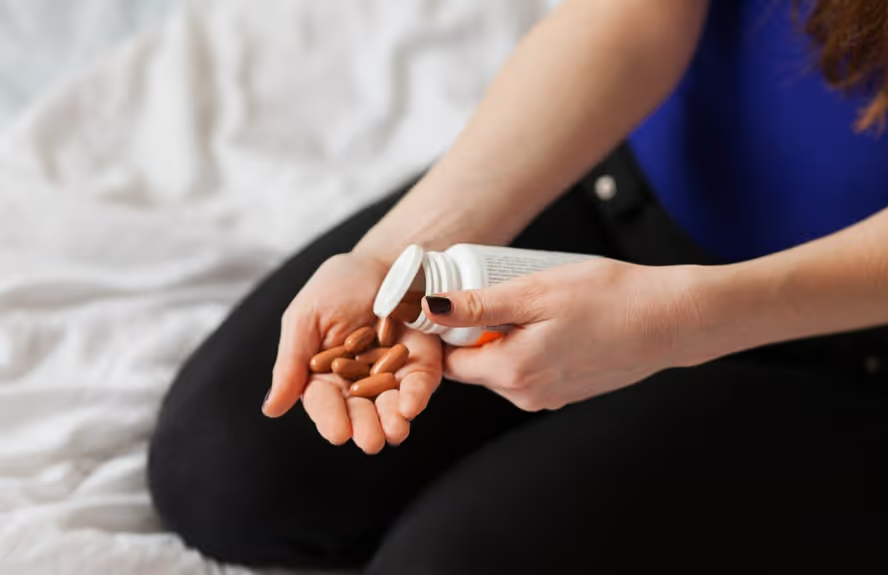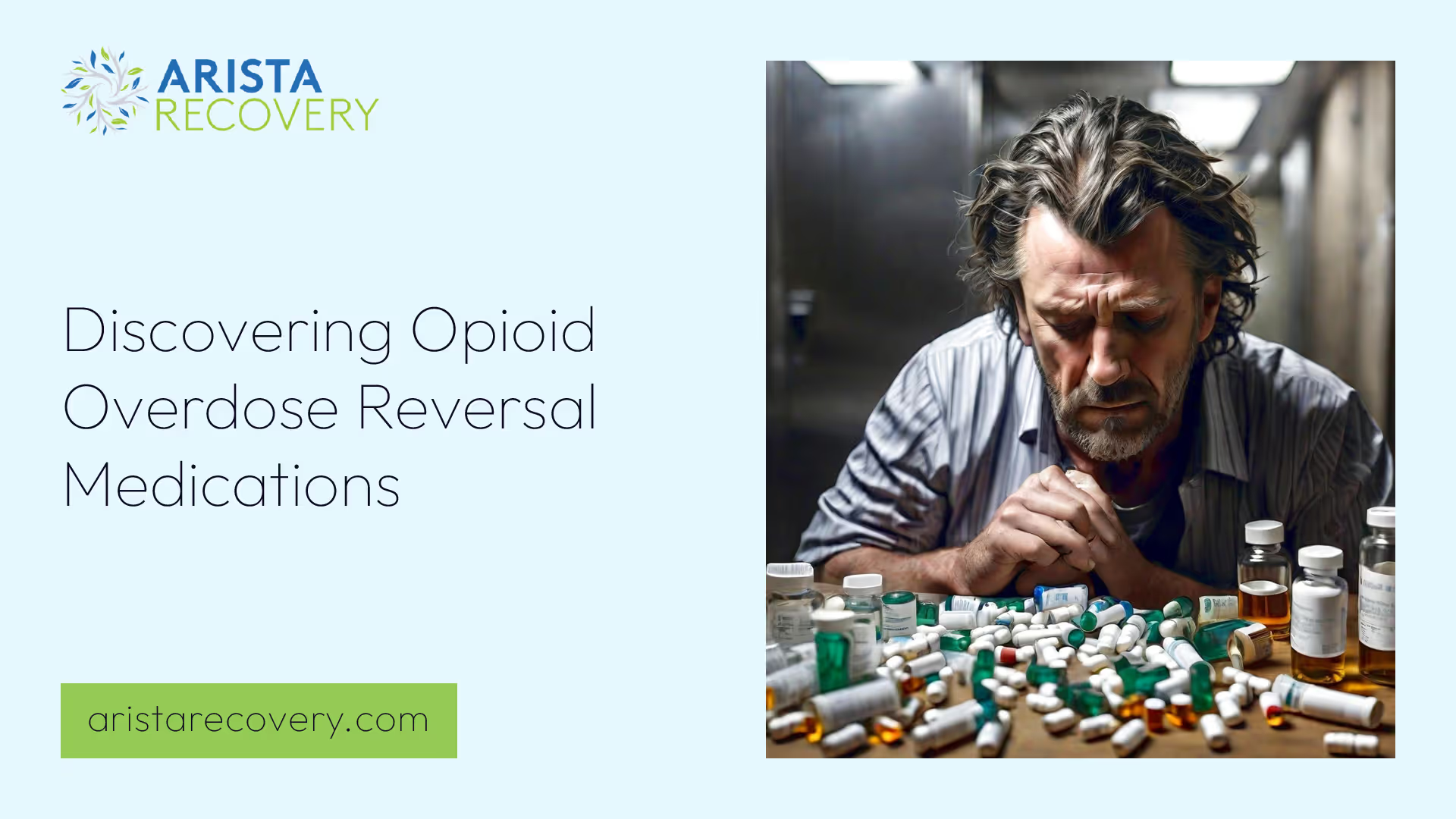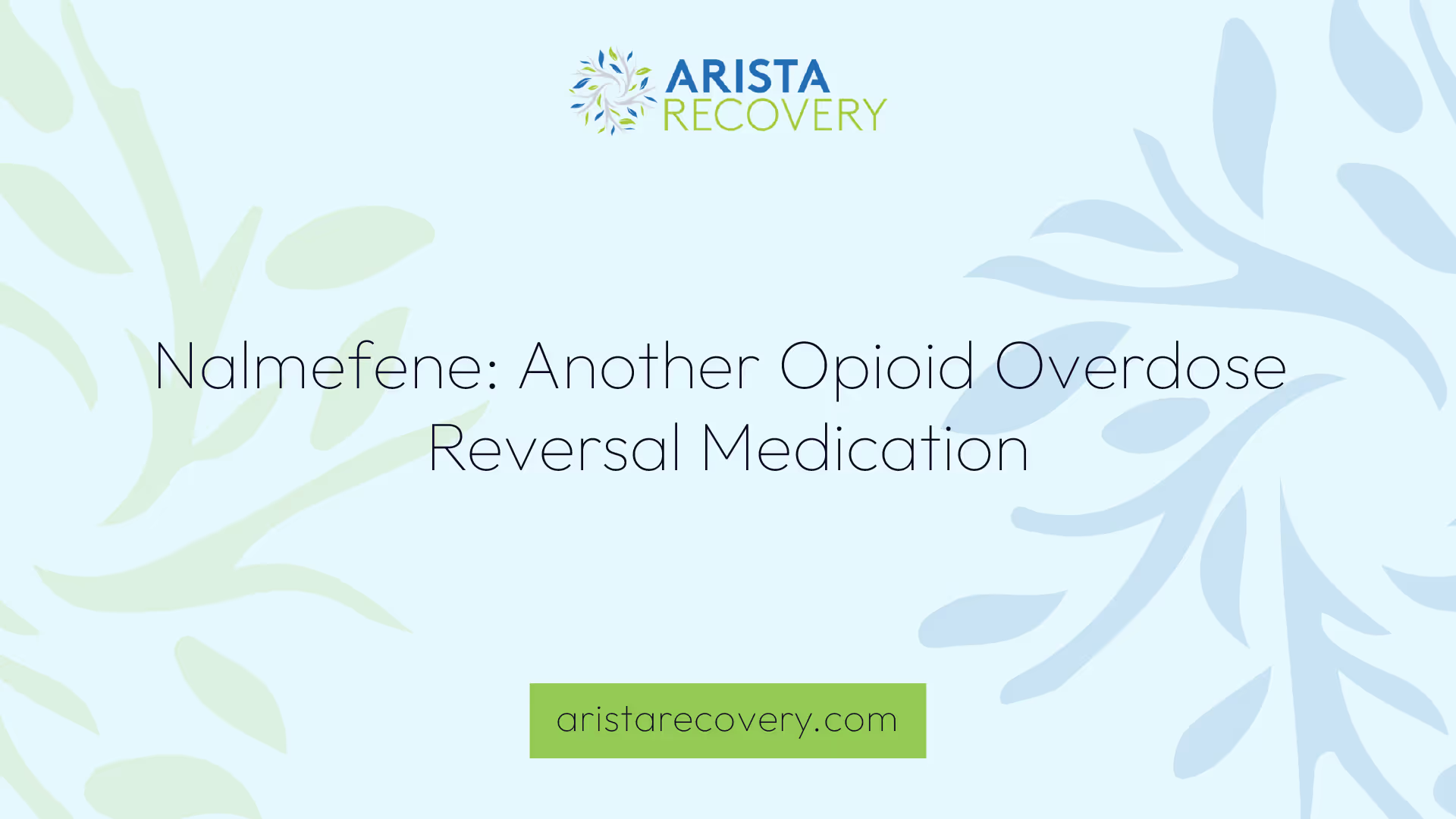Discovering Opioid Overdose Reversal Medications


Understanding Opioid Overdose Reversal Medications
Importance of Opioid Reversal
Opioid overdose is a critical medical emergency that can quickly become fatal if not addressed promptly. Opioid overdose reversal medications play a vital role in preventing deaths and reducing harm. These medications, primarily naloxone and nalmefene, are designed to counteract the life-threatening effects of an opioid overdose, such as respiratory depression and loss of consciousness.
According to the National Institute on Drug Abuse, naloxone can quickly restore normal breathing in individuals experiencing an opioid overdose. This rapid intervention can be the difference between life and death, making naloxone an essential tool for first responders, medical professionals, and even bystanders.
Mechanism of Action
Opioid overdose reversal medications work by targeting the same receptors in the brain that opioids bind to, effectively blocking their effects. The primary mechanism involves competitive inhibition at the opioid receptors, which helps to reverse the dangerous symptoms caused by opioid overdose.
Naloxone
Naloxone is the most widely used opioid antagonist. It works by attaching to opioid receptors and displacing the opioids already present, thereby blocking their effects. This action quickly restores normal breathing and consciousness in individuals who have overdosed on opioids.
For more detailed information, you can read about what drug is an opioid antidote?.
Nalmefene
Nalmefene is another opioid antagonist that functions similarly to naloxone. It binds to opioid receptors, blocking the effects of opioids and reversing the symptoms of overdose. Nalmefene has a longer half-life compared to naloxone, which means it remains active in the body for a longer duration. This can be advantageous in cases of prolonged opioid exposure.
Nalmefene is generally used in settings where continuous monitoring is available, as its extended action can help manage more severe or long-lasting opioid overdoses. For more on this topic, visit what is the new opioid reversal medication?.
Understanding the mechanism of action of these reversal medications is crucial for effective administration during an opioid overdose. By blocking the opioid receptors and reversing the life-threatening effects of an overdose, these medications save lives and provide a critical window for further medical intervention. For additional insights, check out our section on what is the reversal of opiate activity?.

Naloxone: The Primary Opioid Antagonist
Forms of Naloxone
Naloxone, an essential medication for reversing opioid overdoses, is available in two FDA-approved forms: injectable and prepackaged nasal spray. Both forms effectively deliver naloxone to counteract the effects of opioids.
Administration and Effectiveness
Naloxone can be administered through various methods, including nasal spray, intramuscular injection, subcutaneous injection, or intravenous injection. It is recommended for any individual showing signs of an opioid overdose or when an overdose is suspected.
The typical administration methods include:
- Nasal Spray: This method is user-friendly and can be administered by bystanders in emergencies. It quickly delivers naloxone into the bloodstream, effectively reversing the overdose.
- Intramuscular Injection: Injected into the muscle, this method is commonly used by healthcare professionals. It provides rapid absorption and effectiveness.
- Subcutaneous Injection: Injected under the skin, this method offers a slower release but is still effective.
- Intravenous Injection: Administered directly into the veins, this method ensures the fastest delivery and is typically used in clinical settings.
Naloxone works by binding to opioid receptors, blocking the effects of other opioids, and rapidly restoring normal breathing in individuals whose breathing has slowed or stopped due to an opioid overdose [1]. However, its effects are temporary, and it is not a treatment for opioid use disorder.
In March 2023, the FDA approved naloxone nasal spray as the first over-the-counter opioid overdose reversal medication (OORM), making it available in various pharmacies and community-based distribution programs free of charge.
For more information on opioid reversal medications and their administration, you can visit what drug is an opioid antidote? and what is the name of reversal drugs?.

Nalmefene: Another Opioid Overdose Reversal Medication
Role of Nalmefene
Nalmefene is another FDA-approved opioid overdose reversal medication (OORM) that effectively treats acute opioid overdose. Similar to naloxone, nalmefene operates as an opioid antagonist, meaning it binds to opioid receptors in the brain to block the effects of opioids. This action helps reverse the dangerous symptoms of an overdose, such as respiratory depression and unconsciousness. Nalmefene is available as a nasal spray and is prescribed primarily for individuals aged 12 and over [2].
Usage and Considerations
Nalmefene has a higher half-life compared to naloxone, which means its effects last longer in the body. This extended duration can be beneficial in preventing the recurrence of overdose symptoms, but it also comes with the potential for more severe and prolonged withdrawal symptoms. It is essential for individuals and families seeking addiction treatment in Kansas to be aware of these considerations when using nalmefene as an opioid overdose reversal medication.
Figures courtesy of SAMHSA
Pregnant women can be administered nalmefene in limited doses under the supervision of a healthcare provider. However, it is important to note that nalmefene can induce opioid withdrawal in an unborn baby, necessitating close monitoring by medical professionals. For those seeking more detailed information on the safety and considerations of opioid reversal medications, check out our guide on what drug is an opioid antidote?.
Understanding the role and considerations of using nalmefene can help individuals and families make informed decisions about its use in opioid overdose situations. For more on the latest developments in opioid reversal treatments, see our article on what is the new opioid reversal medication?.
Recommendations for Administering Opioid Reversal Medications
Administering opioid overdose reversal medications correctly is crucial for effectively reversing the effects of an opioid overdose. Naloxone and Nalmefene are the two primary medications used for this purpose.
Naloxone and Nalmefene Administration
Naloxone
Naloxone is an opioid antagonist that binds to opioid receptors and reverses the effects of opioids such as heroin, morphine, and oxycodone. It can be administered via:
- Intranasal spray
- Intramuscular injection
- Subcutaneous injection
- Intravenous injection
The FDA approved naloxone nasal spray as the first over-the-counter opioid overdose reversal medication, making it available in many pharmacies and community-based distribution programs free of charge [2]. Practitioners should assess the need to prescribe naloxone for patients taking methadone, buprenorphine, or those at risk of opioid overdose. Patients prescribed naloxone should keep it available at all times and replace it if expired or exposed to extreme temperatures.
Nalmefene
Nalmefene is another FDA-approved opioid overdose reversal medication. It has a higher half-life than naloxone, which can result in more severe and longer-lasting withdrawal symptoms. Nalmefene is intended for use in healthcare and community settings for individuals aged 12 and over and is available by prescription only [2].
Precautions and Side Effects
Precautions
- Pregnancy: Pregnant women can be safely given naloxone and nalmefene in limited doses under the supervision of a doctor. However, nalmefene can cause opioid withdrawal in an unborn baby, necessitating close monitoring of the patient and baby by practitioners.
- Storage: Always store naloxone in a cool, dry place and replace it if exposed to extreme temperatures or if expired.
Side Effects
Serious side effects of opioid overdose reversal medications should be reported to a doctor or emergency services immediately. Some potential side effects include:
- Allergic Reactions: Symptoms such as hives, swelling in the face, lips, or throat require immediate medical attention.
- Opioid Withdrawal Symptoms: Symptoms can occur after using reversal medications and may necessitate prompt medical assistance.
For more information on opioid antidotes, visit our article on what drug is an opioid antidote?. To learn about the latest developments, check out what is the new opioid reversal medication?. For a deeper understanding of how these medications work, read what is the reversal of opiate activity?.
Access to Opioid Overdose Reversal Medications
Access to opioid overdose reversal medications such as naloxone and nalmefene is critical for individuals and families seeking addiction treatment in Kansas. This section explores the availability of these medications in pharmacies, their cost, and the prescription requirements.
Availability in Pharmacies
Naloxone is widely accessible in many pharmacies. As of March 2023, the FDA approved naloxone nasal spray as the first over-the-counter opioid overdose reversal medication (OORM), making it available without a prescription in numerous pharmacies, community-based distribution programs, local public health organizations, or health departments. In Snohomish County, for example, naloxone kits are available at many local pharmacies. A pharmacist will educate customers on how and when to use naloxone.
Cost and Prescription Requirements
The cost of naloxone can vary. In some regions, naloxone kits are approximately $150, and insurance may cover this expense. Additionally, SAMHSA reports that naloxone is available free of charge through many community-based programs and public health organizations.
Accessibility and cost are key factors in ensuring that these life-saving medications are within reach for those who need them. For more details on opioid antidotes, visit our page on what drug is an opioid antidote?.
By making opioid overdose reversal medications more accessible and affordable, communities can better support individuals and families affected by opioid addiction. For further information on the latest in opioid reversal medications, check out our article on what is the new opioid reversal medication?.
Overdose Prevention Strategies
SAMHSA's Toolkit Update
In 2024, SAMHSA updated the Overdose Prevention and Response Toolkit, providing comprehensive guidance on preventing and responding to opioid overdoses. The toolkit serves as a foundation for educating and training communities, local governments, and individuals on overdose prevention. It emphasizes the importance of harm reduction strategies, access to treatment, and the distribution and training of opioid overdose reversal medications like naloxone and nalmefene.
Providing naloxone to individuals who are likely to witness an opioid overdose, along with proper training on its use and resuscitation techniques, has substantially reduced the number of deaths resulting from opioid overdose [4]. This approach is particularly relevant for those with opioid use disorders and individuals leaving prison, as they are at a higher risk of experiencing an overdose.
Harm Reduction and Treatment Emphasis
Harm reduction strategies are pivotal in addressing the opioid crisis. These strategies focus on minimizing the negative consequences associated with drug use rather than solely aiming for abstinence. Naloxone and nalmefene, both FDA-approved opioid overdose reversal medications, play a critical role in harm reduction by effectively reversing opioid overdoses.
The World Health Organization (WHO) recommends a range of treatment options for opioid dependence, including opioid agonist maintenance treatment (e.g., methadone and buprenorphine), psychosocial support, and pharmacological treatments with opioid antagonists like naltrexone [4]. However, access to effective treatment options remains limited, with less than 10% of people worldwide who need such treatment receiving it.
SAMHSA continues to collaborate with federal partners, states, first responders, and stakeholders to increase access to naloxone and educate on its use. The updated toolkit highlights the importance of integrating harm reduction strategies with treatment access to effectively prevent opioid overdoses. For more information on opioid overdose reversal medications, check out our articles on what drug is an opioid antidote? and what is the new opioid reversal medication?.
By utilizing these strategies, communities can work towards reducing the impact of opioid overdoses and supporting individuals on their path to recovery. For further reading on the reversal of opiate activity and the names of reversal drugs, visit our sections on what is the reversal of opiate activity? and what is the name of reversal drugs?.
References
[1]: https://nida.nih.gov/publications/drugfacts/naloxone
[2]: https://www.samhsa.gov/medications-substance-use-disorders/medications-counseling-related-conditions/opioid-overdose-reversal-medications
[3]: https://snohomishcountywa.gov/3657/Opioids
[4]: https://www.who.int/news-room/fact-sheets/detail/opioid-overdose
You’re not alone in this.
When mental health challenges and addiction intersect, it can feel isolating. At Arista, we offer compassionate, evidence-based, and trauma-informed care to help you heal, grow, and move forward.
You’re not alone in this.
When mental health challenges and addiction intersect, it can feel isolating. At Arista, we offer compassionate, evidence-based, and trauma-informed care to help you heal, grow, and move forward.
Support that moves with you.
You’ve taken a brave first step. At Arista Recovery, we’re here to help you continue with best-in-class care designed for long-term healing and support.
.webp)






